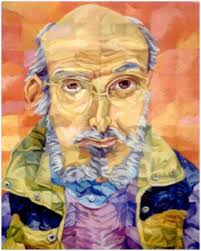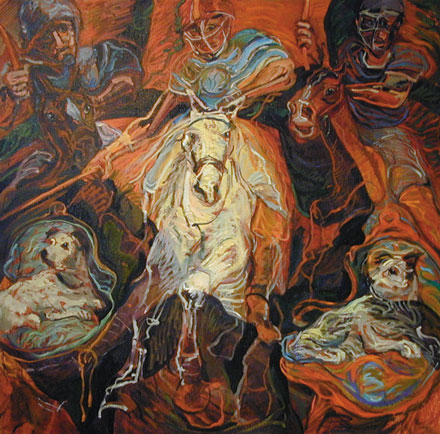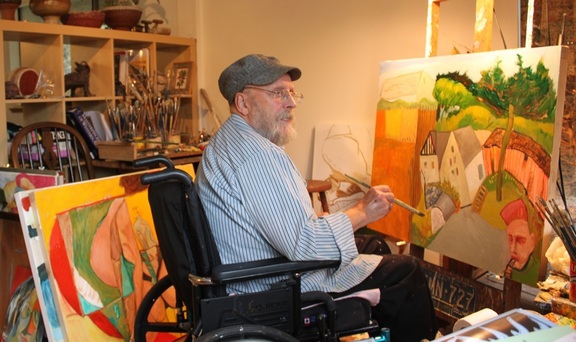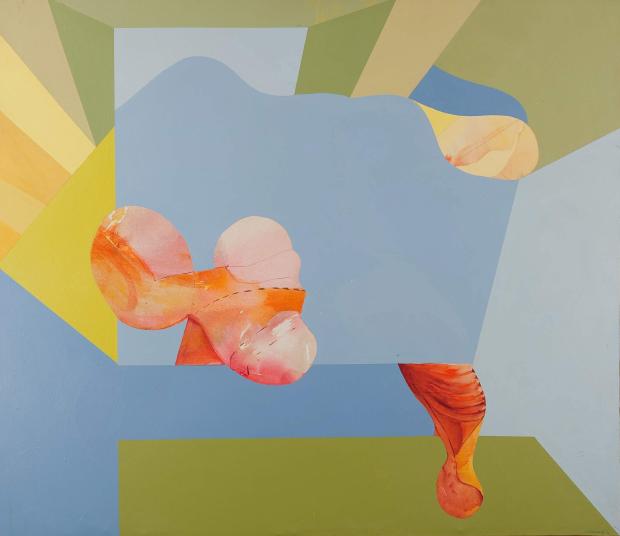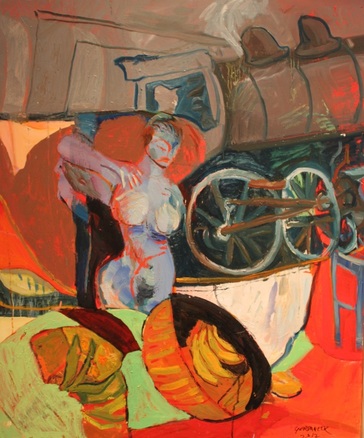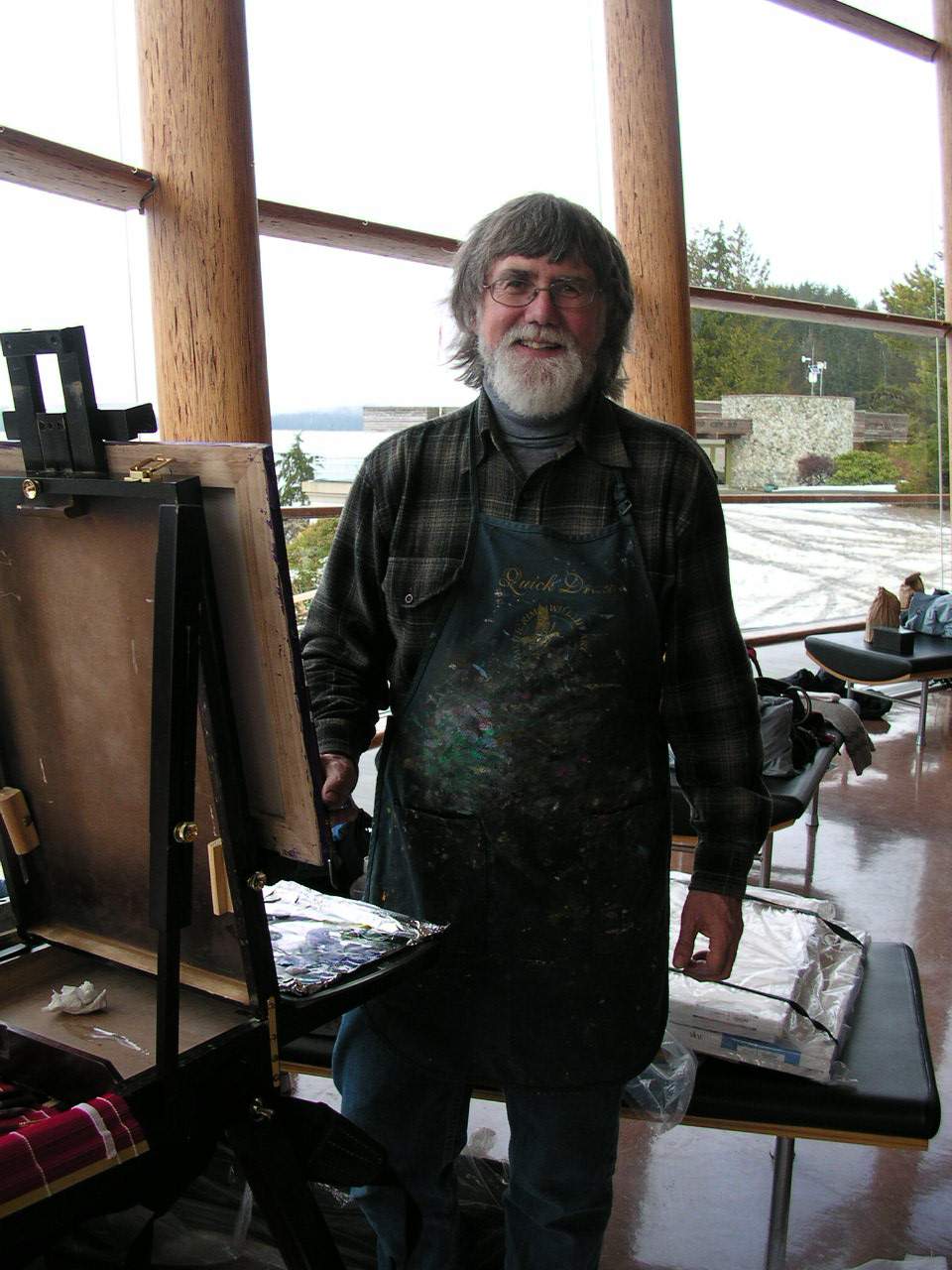Detail of "String Theory"
Val Britton was born in Livingston, NJ. She earned a BFA from the Rhode Island School of Design, Providence, RI 1999, and a MFA, from the California College of the Arts, San Francisco/Oakland, CA, 2006. She lives and works in San Francisco, CA
Val Britton creates intricate collage works that vary in size from pieces as large as 72 x 96 inches to small intimate pieces 8.5 x 8.5 inches. While Val works with a variety of papers by staining, painting, tearing, cutting, composing...she looks to the language of mapping and drawing to inform her process.
Large continent and island like shapes are cut or torn from pieces of this prepared paper, these shapes are in contrast to other areas of meticulous and elaborate line work that look similar to the intricacy of a spider’s web. Britton's lines are painstakingly cut out and composed. These matchstick and thread like lines criss-cross over richly coloured areas. Deep magenta, fuchsia, gray and turquoise are shot through with tones of rich earthy browns next to velvet black land masses. Other colour areas puddle together in pools like gasoline sits on top of water leaving rings of shimmering iridescent blues and pinks. Other areas of paper have slits cut in and delicately peeled back adding texture and direction to her collage pieces.
The vernacular of cartography informs the look and feel of Britton's complex collages. She has created a rich vocabulary that translates well into her work; a network of contour lines depict topographical and geographical information whereas cut and punctured areas symbolize roads, routes and directional co-ordinates. Britton employs drawing elements such as line, shape, texture, colour, value, size and scale to order, direct and structure her unique artworks.
Britton takes the vernacular of both mapping and drawing combining them with traditional painting materials such as gouache, ink, tempera and latex paint. She begins her work by sketching from old photographs, projecting maps, sections of her drawings and ink paintings onto her support material.
Britton’s inspiration comes from USA transcontinental trucking routes that her father traversed during his career. Her father passed away when she was a teenager and in trying to come to terms with his death she says she is mapping out the psychological and emotional spaces inside of her. Mapping acts as a metaphor in Britton's collages, she is searching and exploring a new terrain in order to piece together fragments of her past life. Written by Jill Ehlert
Great links to see Val's work:
Val Britton Website - great images - you can zoom in and see the intricate detail of her work.
Val Britton interview at "In the Make" Studio visits with west coast artists - this is a fantastic interview with Val with great pictures of her studio and process.



